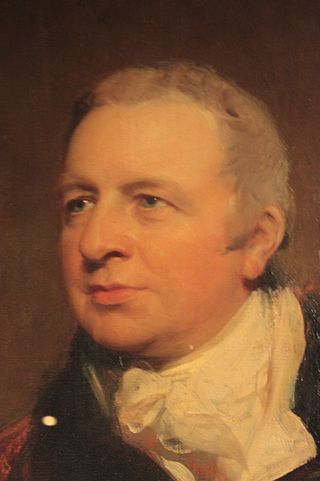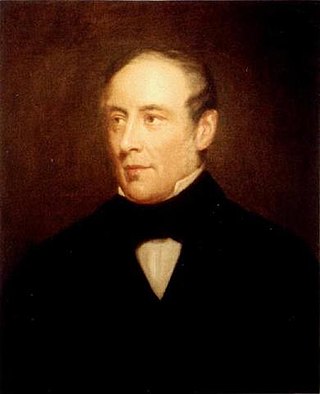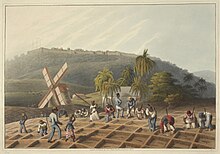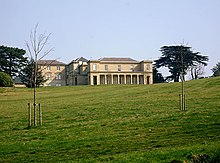
Catherine Hall is a British academic. She is Emerita Professor of Modern British Social and Cultural History at University College London and chair of its digital scholarship project, the Centre for the Study of the Legacies of British Slavery. Her work as a feminist historian focuses on the 18th and 19th centuries, and the themes of gender, class, race and empire.

The Slavery Abolition Act 1833 was an Act of the Parliament of the United Kingdom which provided for the gradual abolition of slavery in most parts of the British Empire. It was passed by Earl Grey's reforming administration and expanded the jurisdiction of the Slave Trade Act 1807 and made the purchase or ownership of slaves illegal within the British Empire, with the exception of "the Territories in the Possession of the East India Company", Ceylon, and Saint Helena. The Act was repealed in 1998 as a part of wider rationalisation of English statute law; however, later anti-slavery legislation remains in force.

George Fife Angas was an English businessman and banker who, while residing in England, played a significant part in the formation and establishment of the Province of South Australia. He established the South Australian Company and was its founding chairman of the board of directors.

George Hibbert was an English merchant, politician, slave-owner, ship-owner, amateur botanist and book collector. With Robert Milligan, he was also one of the principals of the West India Dock Company which instigated the construction of the West India Docks on London's Isle of Dogs in 1800. He also helped found the Royal National Lifeboat Institution in 1824.

The Slave Compensation Act 1837 was an Act of Parliament in the United Kingdom, signed into law on 23 December 1837. With the Slavery Abolition Act 1833, it authorized the Commissioners for the Reduction of the National Debt to compensate slave owners in the British colonies in the amount of approximately £20 million for the freeing of slaves. Based on a government census of 1 August 1834, more than 40,000 awards to slave owners were issued. Since some of the payments were converted into 3.5% government annuities, they lasted until 2015. Most were sold and the money sent abroad for investment.
Benjamin Greene was an English businessman, newspaper owner and the founder of Greene King, one of the United Kingdom's largest brewing businesses. He later became the owner of multiple plantations in the British West Indies and supported slavery.
Sir John Rae Reid, 2nd Baronet (1791–1867) was a Scottish merchant and financier. He was a Tory and Conservative politician who sat in the House of Commons between 1830 and 1847.
Benjamin Buck Greene was a British banker, plater, and financier. He inherited a large fortune derived from the Atlantic slave trade and the sugar industry in the Caribbean, later becoming one of London's leading merchants and shipowners. He served as a director of the Bank of England for fifty years from 1850, also serving as deputy governor (1871-3) and governor (1873–5).
Sheffield Neave (1799–1868) was an English merchant and Governor of the Bank of England from 1857 to 1859.

Alfred Latham (1801–1885) was an English businessman and banker, born in Camberwell to Thomas Latham (1746–1818), a merchant and plantation owner, and his wife, Ann Jones. Inheriting wealth, Latham went into business in 1824, and went into partnership in what became the Arbuthnot Latham bank in 1833, with John Alves Arbuthnot (1802–1875).

David Adetayo Olusoga is a British historian, writer, broadcaster, presenter and film-maker. He is Professor of Public History at the University of Manchester. He has presented historical documentaries on the BBC and contributed to The One Show and The Guardian.
Samuel Sandbach was successively Bailiff, Coroner and Mayor of Liverpool, as well as High Sheriff of Denbighshire and a Justice of the Peace for Lancashire. He made his fortune as a merchant in a partnership that traded with the West Indies and owned slaves.
Sandbach, Tinne & Company, together with its associate firms McInroy, Parker & Company and McInroy, Sandbach & Company, was a business whose roots can be traced back to 1782. Having begun business in the cotton trade, the firms moved into sugar products and exported coffee, molasses, rum and sugar from the West Indies. They owned ships and plantations, and engaged in both slavery and transport of indentured labour.
Eleanora Atherton was an English philanthropist best known for her work in Manchester, England. At the time of her death, she was one of the richest British women in the nineteenth century.
Charles McGarel (1788–1876) was an Ireland-born Ulster-Scots merchant and slave owner. In 1833, the British Government abolished slavery and compensated owners, such as McGarel, who became a major beneficiaries of this scheme. With his wealth he conducted business in the City of London, funded civic works in his home town of Larne, County Antrim and bought land and property in Ireland. Having no children, he left his estate to his brother-in-law, James Hogg, on condition that he integrate McGarel into his family name, becoming James McGarel-Hogg, later Lord Magheramorne.
William Hibbert (1759–1844) was a British merchant, slave trader, and slave owner. He was the sixth son of Robert Hibbert (1717–1784) and Abigail Scholey. With his brother George Hibbert and cousin Robert Hibbert (1769–1849), William was a partner in the West Indian merchant house Geo. Rob. & Wm. Hibbert. The firm was involved in the slave trade and principally with the shipping, insurance and distribution of sugar from the West Indies.
William Atherton, was a merchant and wealthy landowner from Lancashire, England, who operated and co-owned sugar plantations in the former Colony of Jamaica. He was a slave owner, as well as an importer of slaves from Africa.
Anna Eliza Brydges née Gamon, formerly Elletson (1737-1823) was an English aristocrat and plantation owner. She married James Brydges, the third Duke of Chandos.
Green Park Estate was one of several sugar plantations owned by William Atherton and his heirs. It was located in Trelawny Parish, south of Falmouth, Jamaica. By the early nineteenth century, at least 533 people were enslaved there producing mainly sugar and rum.











